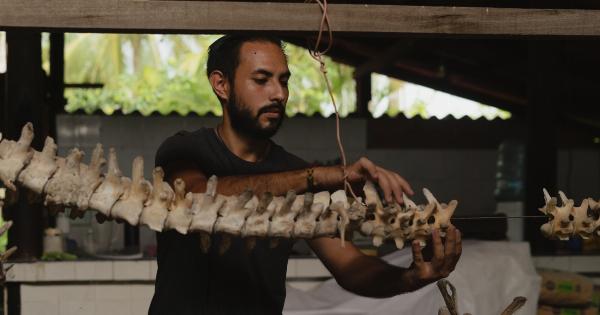In today’s digital age, smart devices have become an integral part of our lives. From smartphones to tablets, children are increasingly exposed to these devices at a younger age.
Combine this with the heavy backpacks they carry to school, and we have a potential recipe for joint damage in young children. In this article, we will explore the impact of smart devices and backpacks on the joints of young children, and discuss ways to prevent and mitigate joint damage.
The Rise of Smart Devices
The prevalence of smart devices among children has skyrocketed in recent years. With the ease of access to technology and the growing reliance on digital educational tools, children are spending more time using these devices every day.
Whether it’s playing games, watching videos, or using educational apps, the constant use of smart devices can have a detrimental effect on their joints.
The Impact on Joint Health
Extended periods of device usage can lead to poor posture and repetitive strain on the joints. Children often assume awkward positions while using smartphones or tablets, putting excessive stress on their neck, shoulders, and wrists.
This can result in musculoskeletal imbalances and potential long-term damage if not addressed.
Backpacks and Joint Damage
In addition to smart devices, heavy backpacks are another common culprit for joint damage in young children. Carrying heavy loads on their backs can lead to spinal misalignment, shoulder strain, and imbalance.
The combination of carrying a heavy backpack and using smart devices can exacerbate these issues and increase the risk of joint damage.
Preventing Joint Damage
While it may be challenging to completely eliminate the use of smart devices and heavy backpacks, there are steps parents and caregivers can take to minimize the risk of joint damage:.
1. Limit Device Usage
Set reasonable time limits for your child’s device usage. Encourage breaks and physical activity to reduce the strain on their joints.
Additionally, ensure the devices are being used in ergonomic positions, such as sitting at a desk with proper support.
2. Backpack Safety
Teach your child how to properly wear a backpack. Opt for backpacks with padded straps and a waist belt to distribute the weight evenly.
Pack only essential items to lighten the load and encourage your child to use lockers or desks to avoid carrying unnecessary weight throughout the day.
3. Posture Awareness
Help your child develop good posture habits. Encourage them to sit up straight, keep their shoulders relaxed, and avoid slouching.
Practicing proper posture while using smart devices and carrying backpacks can significantly reduce the risk of joint damage.
4. Strengthening Exercises
Engage your child in exercises that promote joint strength and flexibility. Activities such as yoga, swimming, and cycling can help improve their overall musculoskeletal health.
Consult with a healthcare professional or a certified trainer to design an appropriate exercise routine for your child.
5. Regular Breaks
Encourage your child to take regular breaks from device usage and backpack carrying. Engage them in activities that involve physical movement and give their joints some time to rest and recover.
Seeking Professional Help
If you notice any signs of joint pain, discomfort, or limited mobility in your child, it is crucial to seek professional help.
A pediatric orthopedic specialist or a physical therapist can assess their joint health and provide appropriate guidance and treatment if needed.
Conclusion
In a technology-driven world, it is essential to be mindful of the potential impact of smart devices and heavy backpacks on the joint health of young children.
By implementing preventive measures and promoting good habits, we can reduce the risk of joint damage and ensure their overall musculoskeletal well-being.






























